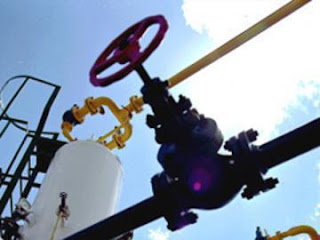Iran and Europe in lose-lose game

Iran banned crude oil supply to France and the UK on Sunday 5 months before the European Union's last oil embargo resolution over Iran comes into force.
The EU foreign ministers agreed in January to ban oil imports from Iran starting July 1, while Iran said "no worry", and "we have our own crude customers".
Banning crude selling to France and UK was imposed while the European Union Economic Advisor Mehrdad Emadi told Trend that France decreased oil import from Iran by 34 percent until January compared to 2011.
According to the United States' Energy Information Administration, France and British's Iranian crude import in the first half of 2011 was about 49,000 and 11,000 barrels per day respectively. Iran's oil import to EU and Turkey amounted to 700,000 bpd in 2011, but this figure has fallen by 50,000 bpd now.
Industry sources told Reuters on February 16 that Iran's top oil buyers in Europe were making substantial cuts in supply months in advance of European Union sanctions, reducing flows to the continent in March by more than a third - or over 300,000 barrels daily.
France's Total has already stopped buying Iran's crude, which is subject to fresh EU embargoes. Market sources said Royal Dutch Shell has scaled back sharply. Shell had no comment on the announcement.
France and the United Kingdom imported about 5 percent of Iranian crude totally in 2011, cutting or continuing this insignificant figure is not problem, however, Iran's announcement about banning oil sells to these countries raised the oil price by 1.9 percent to $105.21 in New York.
European countries buy less than 18 percent of Iranian total crude export, but through euro. Whereas India and China, as Iran's major oil costumers deal with Iran via their national currency or bartering system. This forces Iran to boost imports from India and China to balance its trade turnover with them. For instance, Iran has about $11 billion positive trade balance with India.
Iran's industrial sector depends totally on European technology. EU imports from Iran are 90% energy and energy related products. EU exports to Iran in 2010 were mainly machinery and transport equipment (56.4 percent) and chemicals (15.8 percent).
According to European Commission figures, the EU exported $14.6 billion in goods to Iran in 2010 and Iran exported $18.8 billion in goods to the 27- member region the same year.
This Union has sold 85 percent of Iranian current petrochemicals' license, but China's share in Iran's petrochemical license is only 1 percent.
Germany is Iran's biggest European trade partner. German exports to Iran totaled $4.7 billion from January through November of 2010. According to the German-Iranian Chamber of Commerce, two-thirds of Iranian industry uses German machines.
On the other hand, Iran and China boosted trade volume from $30 billion to $45 billion in latest years, making Beijing Iran's top trade partner. Chinese company has signed a $40 billion energy contract with Iran, but all of them are delayed, without any significant progress.
Regarding this fact that neither China nor India pays international currencies (USD and euro) versus Iranian oil, bartering Iranian "black gold" and these countries' low quality productions, as well as losing the EU markets for Iran seems be an undesirable situation for both Iran and the EU.

Comments
Post a Comment